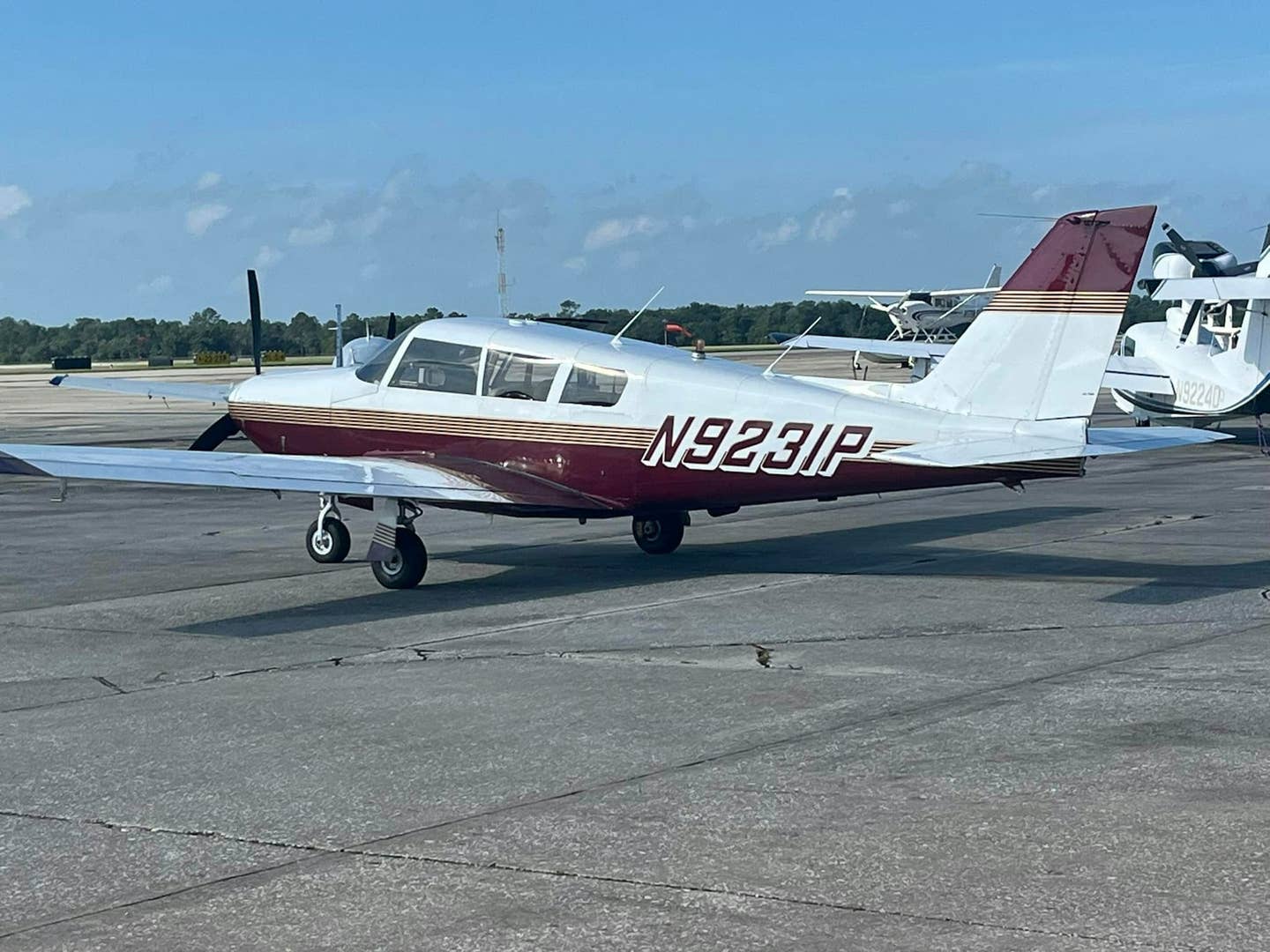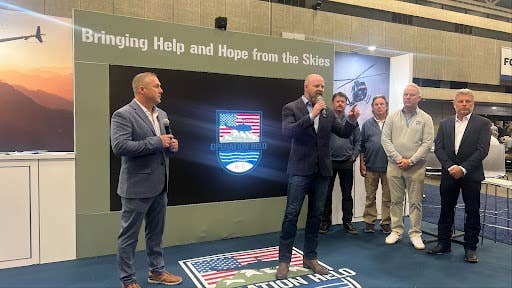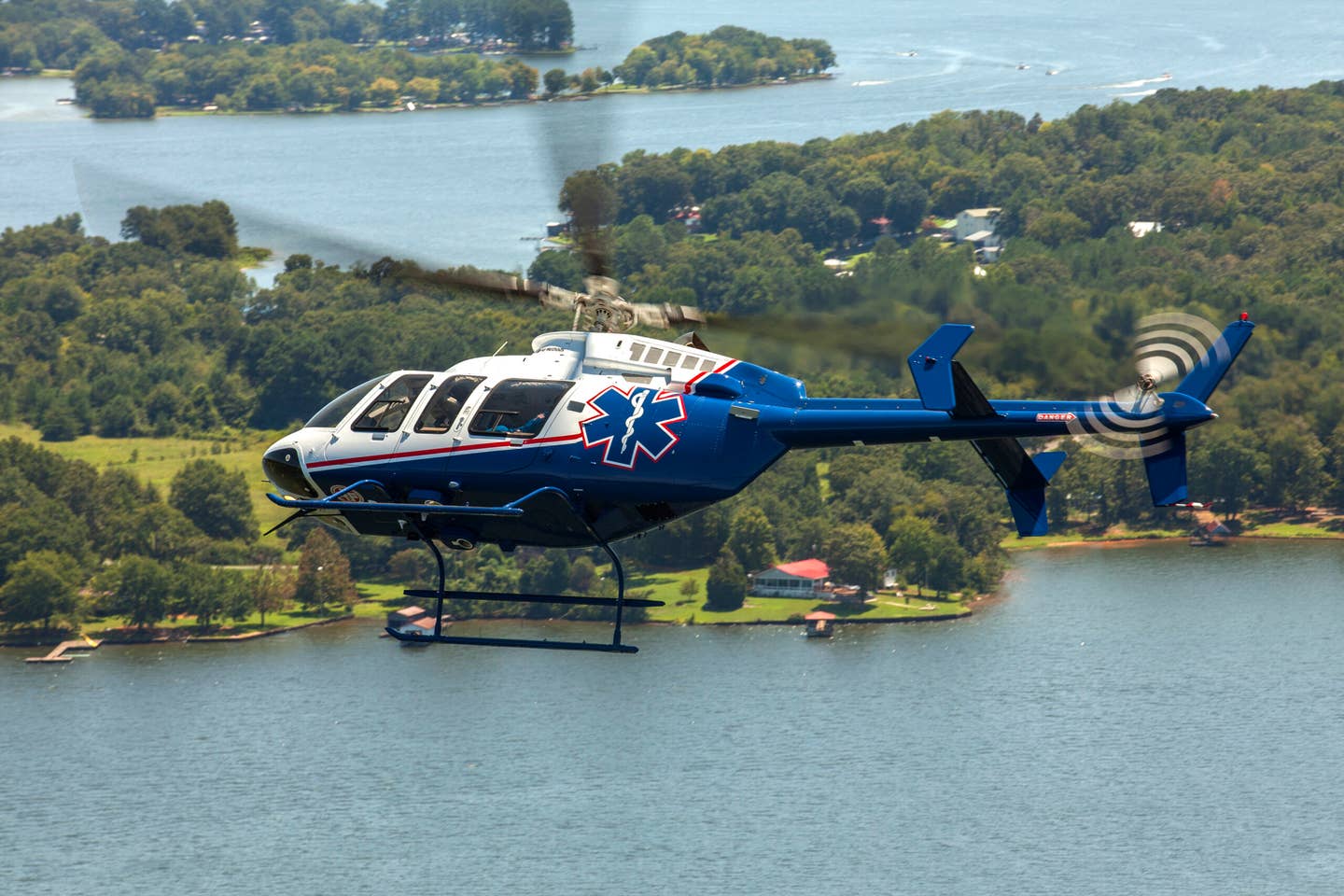
Piper Matrix Piper
When Piper announced back in early November that it was going to produce an unpressurized, roughly $750,000 version of its Mirage six-place pressurized piston single, the reaction from the media was, well, downright tepid.
At face value it seemed as though Piper was merely trying to lower the price point of its million-dollar-plus, cabin-class, pressurized offering while still keeping the Mirage a viable product. And worst of all, it was doing it simply by subtracting some value from it, in the form of pressurization. After all, the critics asked, how much can it cost to put the pressurization system in an airframe already built to be pressurized? The whole Matrix exercise seemed like a cynical marketing ploy designed to drum up a few more PA-46 sales, nothing more. One aviation publication even referred to it as a "deflated Mirage" and asked, "Does the world really need an unpressurized Mirage?"
Since that time, I've had a chance to get to know the airplane and to fly it, and as it turns out, the critics, and I was one of them, were dead wrong.
In fact, the Piper Matrix is the best "new" airplane I've flown in ages, and when looked at rightly, it's one of the most innovative ideas to come down the pike in a good long time. After all, how you get to a design shouldn't matter, just what you've got when you get there. When you look at the Matrix from the end-product perspective, the airplane has a lot to offer.
Think of it this way: Had a Matrix-type product come from a clean sheet of paper and from a different company, it surely would have been hailed as a revolutionary product. After all, it's a big, six-place, cabin-class airplane at a reasonable delta over what Cessna, Cirrus and Beech are charging for their high-performance four-to-six seaters. How much would Cirrus have to charge for a six-seat, turbocharged version of its SR22, or Cessna for a six-seat version of its Cessna (née Columbia) 400, if indeed such outgrowths were possible? That's right, probably right around as much as Piper is getting for the Matrix. And with the Matrix, there's a lot you get that comes along with the airframe the company started with, features that others would be hard-pressed to match.
In fact, Piper hasn't made much of a secret of the fact that it hopes to woo Cirrus and Cessna composite single customers to the Matrix. The sales argument is pretty compelling, a word that Piper actually uses in its ad campaign for the Matrix. As a step-up option the Matrix makes a lot of sense. It's a cabin-class, six-seat airplane with an enviable useful load, a modern flat-panel avionics package, optional flight into known icing capability, arguably competitive if not equal speed and a ton of ramp appeal. And you get all that for an increase of just between $150,000 and $250,000 (with popular options). Piper hopes a lot of pilots like the sound of that proposition.
What's in a Matrix, and what's not?
There seem to be a lot of misconceptions about just what the Piper Matrix is and what it isn't. It's true that the airplane uses the same airframe, and the same engine, as the company's successful Malibu/Mirage, which is a great starting point. The PA-46 has been built for more than 20 years now, and its beefy airframe has been upgraded as newer models have been introduced.
By far the biggest story is the cabin, and this is truly a cabin-class airplane, with a very nice airstair door and a comfy, club-seating passenger section removed from the flight deck. While not quite a bizjet level of comfort, the cabin comes close, offering easy seating for four. I sat in a rear-facing seat across from Piper marketing head Bob Kromer to see how much room there was. The answer was, lots. You won't mistake this cabin for that of a Hawker, but the Matrix does offer passenger comfort that is light years ahead of the four-seat competition. The luxury level is much better than a Saratoga, a 206 or even a Baron.
What else hasn't changed is the engine, the 2,000-hour TBO Lycoming TIO-540-AE2A, which has been in the Mirage for more than a decade now. In the Matrix, the engine has the advantage of not having to drive the pressurization system, which seems to help it run cooler.
So, what gets left out of a Matrix? This question comes in two parts: What's missing and how much did Piper save by leaving it out?
For starters, obviously, the pressurization controls are gone. That, at least according to Piper, saves them a lot of money. And it cuts some weight, too. Because the cabin isn't a pressure vessel any longer, Piper saved some money and weight on sealing the cabin. Also, the lack of pressurization allowed Piper to install much less expensive windows, saving both weight (some) and money (a lot). Also, there's not as much glass in the Matrix because the airframe was designed for pressurization.
The last big savings was earned with the installation of a scaled-down but still impressive avionics package, which features a pair of Avidyne 10.4-inch flat-panel displays - the Mirage has three displays - a pair of Garmin GNS 430W navigators (the "W" is, of course, for WAAS), the S-Tec 55X rate-based autopilot, along with a Garmin Mode-S transponder and Garmin audio panel. It's a nice clean panel layout and design. We prefer the digital attitude-based S-Tec Magic 1500 model in the Piper Meridian, but the 55X is part of the cost savings on the Matrix, and the 55X is arguably appropriate to the mission of an unpressurized airplane. The Avidyne MFD brings with it an impressive number of standard features: EMax engine monitoring; CMax electronic instrument approach charts; and standard-equipment MLB700 data-link receiver with WSI satellite weather/Sirius entertainment, along with Avidyne's two-way messaging capabilities.
| The aircraft flown for this report was an early production Piper PA-46-350T Matrix with typical equipment. In addition to the standard two-screen (one PFD, one MFD) Avidyne Flightmax Entegra flat-panel avionics system, the airplane was equipped with a pair of Garmin GNS 430 navigators, an S-Tec 55X autopilot, Garmin GTX 330 transponder, Garmin GMA 340 audio panel, and built-in, six-place oxygen system. Additionally it was equipped with Avidyne/Jeppesen CMax electronic instrument charts, Avidyne EMax engine display, and the Avidyne MLB700 datalink receiver with WSI satellite weather and Sirius entertainment (subscriptions are extra). An engine-driven air conditioner is also standard. The Matrix flown was also outfitted with several options: pneumatic deicing boots and full equipment for known ice certification, speed brakes, and Avidyne's TAS610 traffic alerting and TWX670 tactical weather lightning detection. All figures are from the manufacturer and are for standard conditions unless noted. |
Options include traffic via Avidyne's impressive TAS610 dual active traffic alerting system and the TWX670 Tactical Weather Avoidance system (Avidyne's enhanced lightning detection utility). Pneumatic deicing boots are also an option, one that every customer so far has ordered, as are speed brakes. Air conditioning, the best I've flown with in a light airplane, is standard.
Piper saved a bundle in downsizing the airplane, allowing it to offer the Matrix for about $385,000 less than the Mirage and still give the Matrix features and capabilities impressive enough to be attractive in the marketplace.
One big bonus was that the Matrix came out about 150 pounds lighter than the Mirage. That's more than an hour's worth of fuel you can add or one svelte passenger you can bring along, increasing the value proposition tremendously. Indeed, the load carrying ability of the airplane is one of its biggest selling points. With full fuel (120 gallons) you can put 680 pounds of passengers and bags in it. With 100 gallons (about 5 hours of endurance) you can pack around 800 pounds into it.
Flying the Matrix
I journeyed down to Piper's factory in Vero Beach, Florida, late last year to go flying in the Matrix. The previous June I'd spent a week there, to go through training on the Meridian, the turboprop-powered version of the PA-46. I loved that airplane, and while I knew that the Matrix would be a very different experience, I was still eager to see how a much lighter, piston-powered version would fly.
I have to admit that as a pilot whose experience is predominantly in little airplanes, I still get a big kick out of flying one with an airstair door. On the ramp, the Matrix is impressive. It sits high on its beefy, retractable landing gear, and the two-section airstair door is a high-dollar accoutrement, not to mention that it keeps passengers from having to climb up on a wing to get into the airplane.
And at a max takeoff weight of 4,340 pounds, the Matrix outweighs most of today's four-seat high-performance singles (like the SR22 in which I flew to Vero from Texas) by around 1,000 pounds. It's a lot of airplane.
Climbing in, you know you're in a serious airplane. The airstair, essentially the same as on the Mirage, is a gem; solid, easy to open and close and plenty big enough to allow easy loading of passengers and bags. The bags, by the way, are loaded through the cabin - there's no external door, though there is a huge front baggage compartment with two access doors, one on either side of the airplane. In the cabin there's a little less structure, as the emergency oxygen system needed in the pressurized airplanes is gone, so there's a new space between the rear facing and pilot's/copilot's seats to toss charts or bags or jackets.
Up front you're reminded, once again, that you're in a different class of airplane. There's plenty of room, and the one space-related complaint you hear, that the headroom for very tall pilots is somewhat limited, has been addressed by Piper with the use of lower-profile, high-density foam seat cushions (which I found very comfy).
The layout of the panel is elegant and clean. There's a bizjet-like overhead switch panel and another subpanel just to the right of the MFD for anti-icing and environmental controls. Other than the overhead panel, which will take a few flights to get used to, pilots of four-seaters should have no trouble transitioning to the Avidyne panel in the Matrix.
Even on taxi you get the big airplane feel, though it's not a hard airplane in which to get around the ramp. With nosewheel steering and very powerful brakes, it's a pleasure to taxi.
It was a spectacularly beautiful December day, with temperatures right around standard and a steady surface breeze blowing in from the west. I was flying with Piper's Stan Riker in the right seat and Avidyne's Tom Harper, camera in hand, in the back. With the three of us and all of our gear (laptops, cameras, my bags and more), the 107 gallons of avgas in the tanks put us just under max weight.
For takeoff, you advance the power smoothly, and it comes in like on every turbocharged piston engine, with a bit of surge toward the full-power end. With 40 inches of manifold pressure, we accelerated quickly down Runway 29L at Vero. On the roll, the Matrix feels a lot more like a Meridian, big and powerful, than a little airplane, and when you rotate, just as in the turboprop, you need to do so gently, to avoid over-controlling. I could have used a slightly steadier hand on my first two takeoffs. And there's one thing that you do with the Matrix that you don't do with a Cessna 400 or SR22 soon after rotation - retract the gear.
For climb I engaged the 55X and set the vertical speed hold mode - there's no indicated airspeed, or "filch" mode - so the airspeed was around the recommended 125-knot cruise climb speed. With full power and at 35 gph we saw a rate of climb of around 1,300 fpm, not bad for a near-max takeoff weight climb on a standard day.
We step climbed to 17,000 feet to see how the Matrix would do in terms of cruise. Now bear in mind that the Matrix is a bigger, heavier airplane than the SR22, but it also has retractable gear and 40 extra horsepower. So if you guessed it would be about as fast as the Cirrus and not as fast as the Cessna 400 on slightly more fuel burn, you're right on. At high-speed cruise (32 inches, 2500 rpm and 21.5 gph), we saw about 190 knots at 12,000 feet and 202 knots at 16,000 feet. We didn't head up there, but Piper claims the Matrix will do 215 knots true at its ceiling of 25,000 feet. (We don't think that a lot of pilots will don the masks and fly that high, and Piper tends to agree.)
To increase range, a lot of pilots will operate the Matrix at less than high-speed cruise power settings. Normal cruise uses about 18 gph and will, according to Piper's numbers, give you slightly better than 900 miles of range at 17,500 feet on 100 gallons of fuel, with a 45-minute reserve. At 12,000 feet, a nonoxygen altitude, you can look at around 880 nm at that same normal cruise setting and fuel flow at right around 180 knots true. And if 21.5 gph seems high, you can always come back on the power and save some fuel and gain some range without sacrificing too much speed. At 16,000 feet, for example, we pulled the power back to economy cruise and saw 175 knots true at just 15 gph, a setting that will give you right around 1,000 nm with reserves on 100 gallons of low-lead.
Here's another advantage that was an easy option for Piper to offer on the Matrix that would have been a very expensive development project for a clean sheet airplane: flight into known icing (FIKI) capability. Now, FIKI is an option ($55,000), but Piper says that every dealer and retail customer so far has ordered it. The package provides boots on the wings and tail to go along with the prop and windshield heat, heated pitot, ice inspection lights and more.
Our original plan had been to cruise up to Tallahassee, head over to St. Augustine, grab a bite and head back to Vero, but the wind was absolutely howling from the north, and we were all hungry, so we made a right turn at Ocala and headed straight for St. Augustine.
On descent you get another handful of big airplane advantages to the Matrix. For starters, you can get speed brakes as an option, which, again, just about every customer has ordered. The "blades" give you about 20 knots of slowdown and can be deployed right up to VNE. The gear, too, is an excellent speed control device. The gear can be lowered and the first notch of flaps deployed at 165 knots, by which point getting slowed to approach speed is a given. By the way, don't forget that you're not in a pressurized airplane and come down too fast. Neither your ears, nor your passengers', will approve.
For an airplane of its size and wingspan (43 feet), the Matrix is a pleasant enough airplane to hand fly. I asked for and got the GPS Runway 31 approach at St. Augustine and let the 55X fly the T-configured approach all the way to the final approach fix, which it did quite precisely. There was a stiff crosswind, so I got to see how the Matrix handles when cross-controlled - very nicely, it turns out - and we needed not much more than 1,500 feet of the 8,000 available, and that was with minimum braking.
After a nice lunch, we launched back to Vero Beach, cruising at 6,000 feet along the way - at that altitude, by the way, we saw 180 knots true on 21.5 gph (high-speed cruise).
Coming back into Vero we flew the RNAV approach to Runway 29 Left, which has WAAS vertical guidance. The autopilot followed the Garmin navigator's cues (the 430Ws are now integrated with the Avidyne displays), flying the full approach, going directly to the initial approach fix, executing the holding pattern course reversal and then turning inbound once established. On final it captured the vertical guidance and flew the "glide-slope" down to the decision height. (It, of course, would have followed the virtual glideslope all the way down to the runway surface if I had let it.)
I was solely responsible for the one-bounce arrival.
Conclusions
How will pilots stepping up to a Matrix do with it? Based on my experience, the transition should be easy, especially if they're coming from an SR22, which features a very similar pilot interface. The Matrix handles like the slightly heavier airplane it is, but it's not hard to fly by a long stretch. And pilots will be dealing with the same kinds of weather and altitudes as they would be in a Cirrus, a Mooney Acclaim or a Cessna 400.
Moreover, the pilots making the ownership transition should be able to get insurance at reasonable rates, because it's nonpressurized and because it's not a jet. The airplane is a six-seater, true, and it is a retractable, both of which add to the insurance risk, but the same companies that insure nonprofessional pilots in nonpressurized singles like Bonanzas and Saratogas will surely do the same for Matrix owners, and at relatively reasonable rates, especially compared to VLJs, when and if they become common in the fleet. Those factors are huge.
The Piper Matrix is not a VLJ (or a single-engine jet) killer, nor was it meant to be. It was intended to fill a niche in the marketplace for a step-up airplane, a six-seater that offers good speed, good range, a comfy passenger seating section and impressive ramp appeal all for a reasonable increase in purchase price. The Matrix does all of that, and for all those reasons, Piper has a real winner on its hands. I just wish I'd seen that right off the bat.

Sign-up for newsletters & special offers!
Get the latest FLYING stories & special offers delivered directly to your inbox






